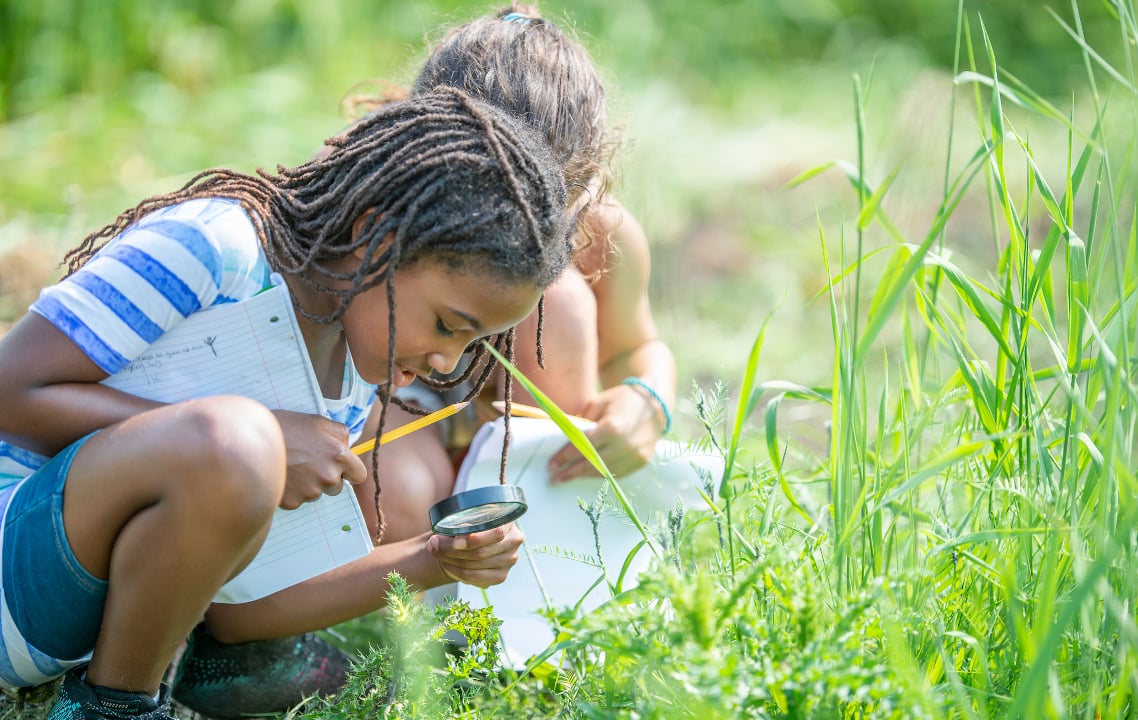We talked to a veteran homeschooling mom in Western North Carolina, for details on what a nature journal is, and how to get started with one.
Charlotte Mason, a British educator from the 1800s, once said, “Let them once get in touch with nature and a habit is formed which will be a source of delight through life.” But how do you instill such habits in your child? And, why is studying nature a key piece of the puzzle?
According to Charlotte Mason, nature studies are a way of achieving many habits without the use of a dry textbook. Her philosophy is based on simple and short lessons that engage the child. She also advocated waiting for child readiness, as well as hands-on learning.
Fast forward to the early 2000s, when a woman named Karen Andreola wrote “Pocketful of Pinecones”, a book that describes the nature adventures she took with her homeschooled children. From reading this book, veteran homeschool mom, Kathy McCormick, began nature journaling with her children in her homeschool.
“I’ve been homeschooling for 26 years now,” says McCormick. “9 children, ages 9 to 29. I’ve graduated five children who have all gone off to colleges and universities, receiving degrees at every possible level. I still have 4 children at home. All have done well, and all have nature journaled.”
McCormick graduated with her Bachelors of Science in Child Development and Family Relationships and has worked in various educational environments.
She is a very relaxed homeschooler who prefers student-led, interest-based learning. In addition, she has been the Spruce Pine, North Carolina, Classical Conversations Foundations Essentials Director for 4 years. Most of what she teaches is found in the great outdoors, hence her love for nature journaling.
So, what’s the hype with nature journaling? What is it, and how can you implement it, too?
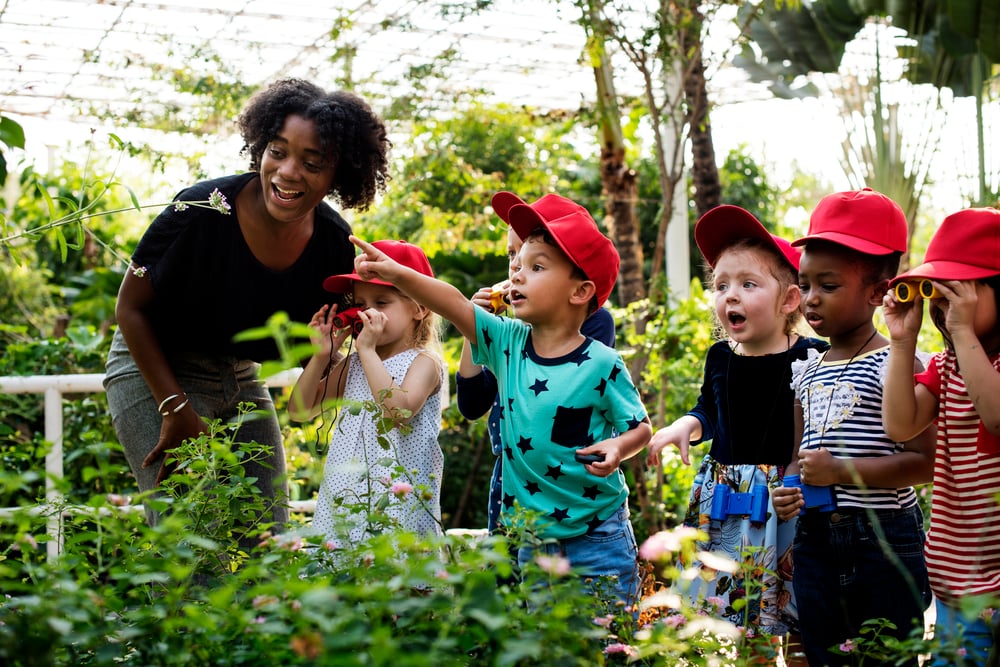
What is a Nature Journal?
Simply put, a nature journal is a compilation of an individual’s observations of the outside world.
With the use of blank paper and a pencil, your child is encouraged to explore his or her thoughts, creativity and ideas about a particular item or animal found in nature. Each entry is unique to its artist, building a sense of awe and curiosity that is meant to stay with the child for their lifetime.
“All you need to nature journal is a composition notebook, a pencil and a sense of wonder,” explains McCormick. “Keep it simple, it doesn’t need to be fancy. Your nature journals are your treasure, a time capsule of all the memories you make learning and exploring with your child.”
A nature journal is a tool in your homeschool. It opens the door for learning how to observe the natural world around you. All subjects can be applied, including science, handwriting, art, and language arts.
“The entire school day can be found in nature,” says McCormick. “There are many Forest or Natural Schools out there that spend the majority of their days outside, rain or shine. I truly believe this helps children learn to be good stewards of the Earth we live on.”
Who Can Nature Journal?
Although this concept is typically applied to homeschooled children, everyone, no matter their age or schooling choice, can nature journal.
Invite even the youngest of children to collect acorns and rocks in their pockets, while older children spend time observing a specific item from nature. After some time observing and collecting, journal about your day. Sketch, label, research and even allow the younger ones to doodle in their own designated notebook. This will help instill the habit of observation that Charlotte Mason so passionately shared.
It's For the Adults Too!
McCormick advocates for parents, especially moms, to nature journal even if their child isn’t quite interested yet.
“I started my own journal in 2008,” says McCormick. “I remember my youngest son bringing me a flower, so I wrote about it. I sketched and colored the flower, wrote a short poem, and took in the sweet moment with him. When I look back at this entry, it floods me with the memory of that day.”
Always remember to include the date, time of day and location of your entry. You might put your journal down for a while, but you can always come back to it.

How to Nature Journal
It doesn’t take much to get started. All you need is a few supplies and a desire to get outside. Over time, you’ll begin to naturally notice the sights and smells around you. The smell of fresh-cut grass, or the fluffiness of the clouds above, is a simple skill your child will take away with them long after they leave home.
Supplies Needed for Nature Journaling
To get you going, all you need is a notebook and pencil. But, if you’d like to take things a step further, below are a few supplies you might want to have on hand:
- A notebook, composition book or journal with blank pages
- Pencils
- Colored pencils, crayons or markers
- Additional loose-leaf paper
- Field guides
- Tape
- Small ruler
- Magnifying glass
- A container to carry specimens home in
To keep everything organized, pack a tote bag or backpack with all of your nature journal supplies.
Getting Started with Your Nature Journal
With all of your supplies gathered, the first step to nature journaling is getting outside. Go for a walk and observe what is around you. Pause when you find something interesting, and spend a moment looking, possibly drawing and writing about it. Then continue on.
If allowed, you may choose to gather small items from your walk that you bring back with you to further study at home. It can be fun to collect acorns, rocks and feathers to tape into that day’s journal entry.
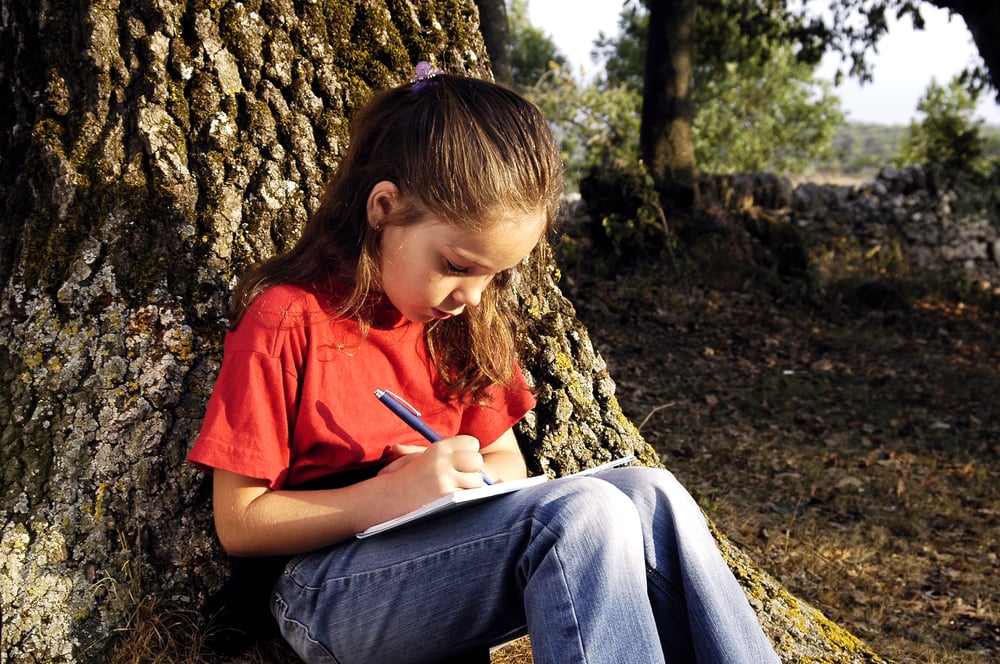
Wonder can be found just about anywhere. “We have stopped during a drive to journal,” says McCormick. “Once, we pulled the car over and everyone hopped out to draw a horse galloping about in a pasture. This form of learning gives your child a sense of wonder. It’s amazing.”
Asking your child questions about your nature walk is one way of directing the journaling process. Questions and statements such as:
- What season are we in?
- What do you notice about the item(s) we gathered today?
- Draw or sketch what you see.
- What is the weather like today?
- What do, or did, you smell, hear, see or feel?
Doing so, helps your child get more in touch with nature and the world around them.
Ideas for Implementing a Nature Journal
1. Make it Seasonal
One of the benefits of nature journaling is that it can be used all year long. The seasons can act as a springboard for your studies. Depending upon where you live, the seasonal availability will differ. Simply pick a topic related to the season and environment you live in, and head outside on a nature walk.
Begin to find, and possibly collect, items related to your chosen topic. As you go about, mindfully use your senses to study the world around you. Listen for the birds, touch the tree bark and observe the wildlife (without disturbing them, of course!).
The following are a few seasonal themes to help get you started:
AUTUMN
-
- Seeds and their Life Cycle
- The Harvest Moon
- Moss
- Mushrooms
- Autumn Leaves
- Apples
- Acorns and Pine cones
WINTER
-
- Snow
- Evergreens
- Christmas Plants
- Animal Tracks in the Snow
- Maple Trees and Sugaring
- The Winter Sky
- Bare Trees and Sticks
SPRING
-
- Nesting Birds
- Plant Life and Flowers
- Butterflies
- Animals Coming Out of Hibernation
- Tadpoles
- Baby Animals
- Blooming Trees
SUMMER
-
- The Warm Sun
- Lakes and Oceans
- Rocks
- Beaches
- Summer Plant Life, such as Sunflowers
- Bees
- Insects and Spiders
2. Follow Your Students' Interests
According to McCormick, nature journaling allows a glimpse into what interests your child.
“Giving your child ‘school-worthy’ opportunities without a lot of scheduled bookwork is key,” she explains. “They’ll begin to explore nature and learn along the way without even realizing it. As the parent and teacher, you need to answer the question, what does ‘school’ look like for you? Only you and your child know what that is. And, ultimately, it is based on your child’s passions.”
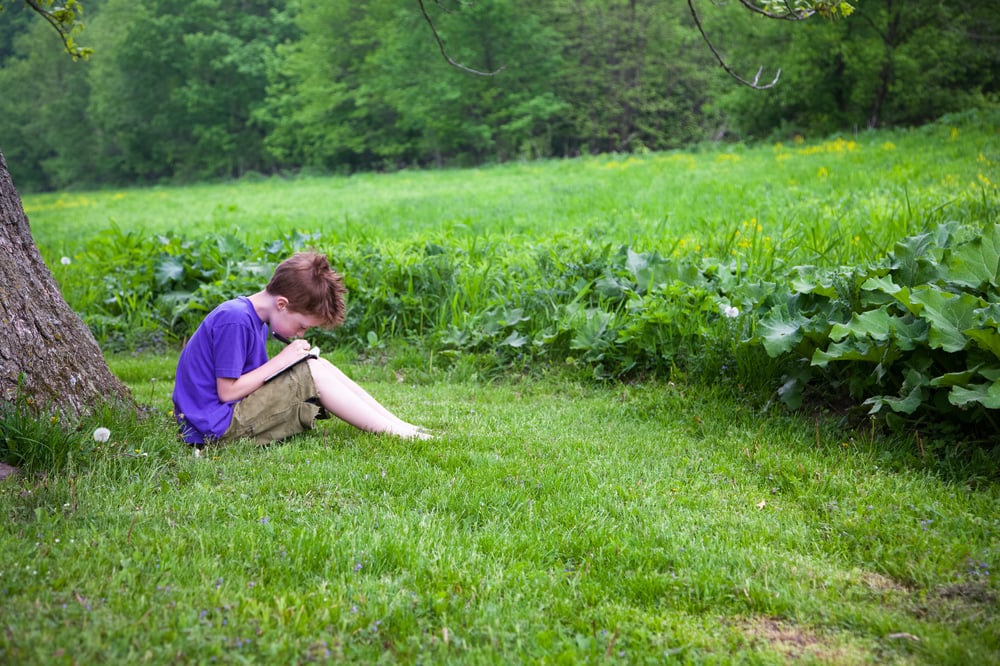
If a nature topic spurs interest for your child, McCormick suggests expanding upon it. If not, don’t push it. Keeping nature study relaxed and student-led gives you the chance to wait for readiness. From readiness, interests begin to surface.
“Let them do the things that excite them,” says McCormick. “By doing so, your child will begin to treasure the learning process without it feeling dry and boring.”
A few ways to expand upon a nature topic:
- Look up the plant, animal or item found in nature in a field guide book and read about it.
- After drawing in your nature journal, label the parts and pieces of the object.
- Memorize or write a poem about the entry.
- Learn the Latin name of the object and record it in the journal.
3. Do a nature journal unit study
Kathy McCormick’s oldest son recently purchased a piece of property. While exploring, he found caves that housed pools of water in them. He took his younger siblings to the caves where they wore headlamps. Everyone spent time observing the animals that lived within.
“They found bats!” exclaimed McCormick. “After the kids got back, they were so excited. This led to a bat unit study, which focuses on studying a single topic for a period of time. If we wanted to expand the experience further, we would visit our local library and find a few more books to study, so the kids could journal about them.”
Farms and homesteads, unique properties, and parks are good examples of places that can be observed for a unit study.
Take a homestead, for example. You may choose to task your child with journaling about a particular farm animal. Draw a picture, do a bit of independent research and label the animal’s body parts.
Next, spend some time observing and drawing the various vegetables and weeds growing in the garden. Many plants considered weeds have known medicinal properties. Take time researching their uses and journal about what you learn.
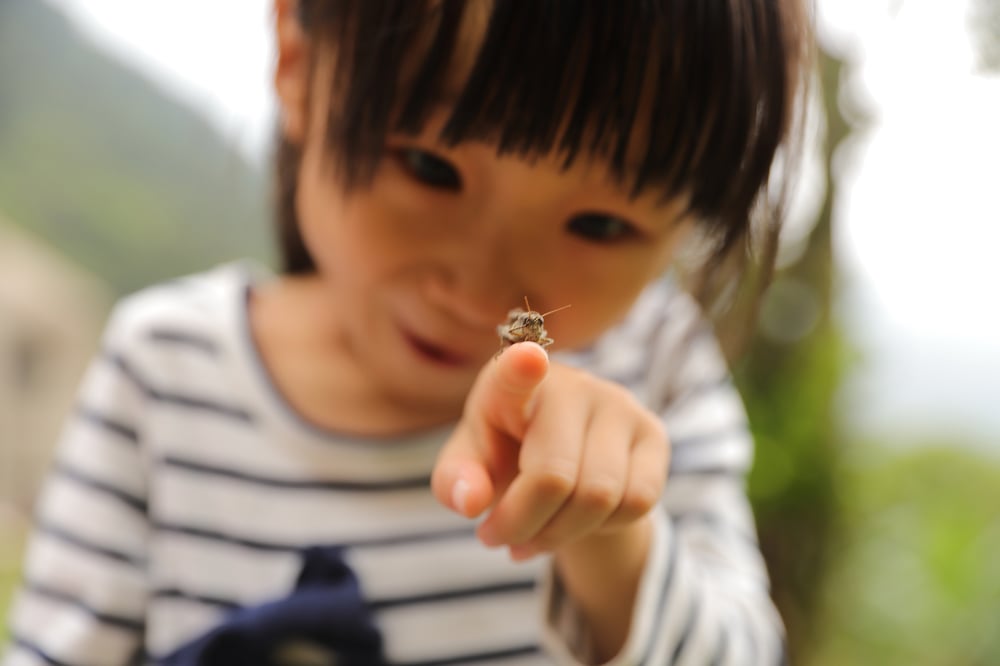
Being in Nature Promotes Health in Children and Adults
It’s easy to see that nature journaling offers many benefits to children and adults alike. Beyond establishing the habit of observation, many scientific studies back the health benefits of being in nature and taking it all in.
The National Library of Medicine published a study in December 2019 titled “Physiological Benefits of Viewing Nature: A Systematic Review of Indoor Experiments”. The findings included that “contact with nature has been proposed as a solution to achieve physiological relaxation and stress recovery…”
Basically, researchers showed individuals pictures and videos of nature. Those that were shown real nature stimuli “had positive effects on cerebral and autonomic nervous activities compared with the control.” An interesting study that proves nature is worth getting into.
John Muir Laws was recently featured on the 1000 Hours Outside Podcast, chatting about the many benefits of nature journaling on your outdoor adventures. Here he comments on the positive effects on relationships, personal improvements in dyslexia and more.
Not only is being in nature a positive activity for individuals, it’s also worthwhile for the entire family unit. “Being in nature and journaling is something I feel is valuable in my homeschool,” McCormick explains. “Most people think they have to convince themselves that nature is an excellent addition to the homeschool. But it won’t take you long to realize how beneficial it is for everyone.”
For more information on how nature and rural living can benefit your children's health and development, download our eGuide: "How Country Life Makes Children Strong and Resilient" below.


